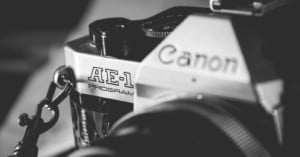
Skylum is Bringing Luminar to the iPad and Vision Pro
Skylum is bringing Luminar to the Apple iPad through its first official app that also works in Vision Pro.

Skylum is bringing Luminar to the Apple iPad through its first official app that also works in Vision Pro.

One of the greatest things about film photography is its friendliness toward do-it-yourself approaches. Want to hack together a working camera out of discount hardware store supplies? All the power to you! Want to shoot on art paper coated in a home-concocted emulsion, contact-printed using authentic techniques from the 1800s? Why not?

Pinsta Instant Camera is a new pinhole camera that can shoot directly onto positive 4x5 inch photographic paper where it develops internally, eliminating the need for a darkroom.

YouTuber Mathieu Stern recently discovered a 'time capsule' in the basement of his old family home. The box—dating from about the year 1900, by Stern's estimation—contained two glass plate negatives, which he decided to try and develop using one of the oldest photographic printing methods in existence: the Cyanotype.

I finally did it! After sitting in my fridge for a few months, I managed to developed myself a roll of CineStill 800 pushed to 3200 ISO, and the results look great! The great thing: it's actually pretty easy to develop pushed C-41 film at home.

Developing your own 35mm or 120 film at home almost always requires a darkroom, but LAB-BOX wants to change all that. The new 'multi-format daylight-loading film tank' lets you develop your own film anywhere, even in bright sunlight if you'd like. No darkroom required.

The world of analog photography surprises me a bit more every day! I recently read about a technique called Stand Development, so I have decided to try it myself. For those of who never heard of it before, let me explain you the differences between it and a normal development process.

These are not Photoshop creations and they are not double exposures. In a world of digital manipulation, Hungarian photographer Judit Cholnoky's portrait series Fading Memories is a beautiful example of the power of film photography and alternative processing.

Does waiting for your photos to develop make the experience of picture taking more enjoyable? More importantly, does it make you more deliberate about the photos you do take? Nevercenter Labs' answer to both of those questions is a resounding "yes," which is why they created a neat new smartphone photography app called 1-Hour Photo.

Behind every great photograph is a well-crafted creative workflow, and if you haven't honed yours yet, then this seminar by photographer Robert Rodriguez Jr. will help you nail it down. In a little over an hour, he details the four steps he uses in Lightroom's Develop module to go from RAW file to final, edited image.

Developers rejoice, you have another API to play with. In a recent move that should help bring more Sony apps to market, the camera manufacturer has released an API that will allow you to develop remote control apps for 8 of its WiFi-enabled cameras.

After almost two years of shooting film nonstop and more than $1,000 worth of expenses on processing and prints, I needed to reconsider my budget and find a way of being able to shoot more and pay less. I thus began to process my C-41 rolls at home. It's extremely easy to do and I‘ll show you today how to do it, step by step.

Update: We’re hearing that Walmart is no longer offering medium format film development. Want to try your hand at …

Knowing how long to develop film for is easy if you use popular films and developers, but what if …

Here’s another helpful step-by-step guide teaching how to develop B&W film (in this case it’s …

Here’s a step-by-step video tutorial teaching how to develop your B&W film using instant coffee and powdered vitamin C …